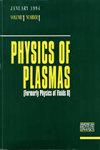关于满足断层重构和测量精度要求的概念研究:为 DEMO 开发辐射功率诊断的关键因素
IF 2.2
3区 物理与天体物理
Q3 PHYSICS, FLUIDS & PLASMAS
引用次数: 0
摘要
这项工作旨在开发核心等离子体辐射功率和软 X 射线强度测量诊断系统,这将有助于未来的聚变反应堆按照 DEMO 控制要求确保可靠的等离子体控制(通过监测分离矩阵的功率损耗)。为此,我们将研究开发这样一种探测系统,通过软 X 射线诊断提供所需的信息。这种探测系统的目标光子范围为 3-50 千伏。开发工作包括详细的诊断设计、物理、工程和集成研究,以及对诊断及其组件的可行性和性能进行调查。研发工作目前正处于设计阶段。不过,在满足系统要求方面已经有了答案。为了监测穿过分离矩阵的功率,需要对等离子体辐射进行精确估算,以保持高效等离子体。这需要严格的测量精度标准,核心等离子体辐射功率估算的精度裕度为 3%,探测器阵列中单个探测器的单次测量噪声为 5%。在此,根据对层析成像重建和探测器测量能力的分析,对探测系统的精度进行了初步估算。针对所考虑的等离子体视场,找到了用于层析成像重建的最佳视线数量。此外,还提出了探测系统光子敏感室的初步概念。这样就可以评估探测器对水平和垂直视线的预测测量精度。本文章由计算机程序翻译,如有差异,请以英文原文为准。
Conceptual research on meeting tomographic reconstruction and measurement accuracy requirements: Key factors in the development of a radiated power diagnostics for DEMO
This work addresses the development of diagnostics for core plasma radiated power and soft x-ray intensity measurements, which will be useful in future fusion reactors to ensure reliable plasma control (by monitoring the power loss across the separatrix) in accordance with the DEMO control requirements. For this purpose, we look into the development of such a detection system that will provide the required information via soft x-ray diagnostics. The target photon range for such a detecting system is considered to be 3–50 keV. The aspects of the development have included detailed diagnostics design, physics, engineering and integration studies, as well as an investigation into the feasibility and performance of the diagnostics and its components. The development is currently in the design phase. Nevertheless, the answer is already needed regarding the fulfillment of system requirements. In order to monitor the power crossing the separatrix, a precise estimation of the plasma radiation is needed to maintain the high-efficiency plasma. This requires strict measurement accuracy criteria, with 3% accuracy margin for the core plasma radiated power estimate and 5% noise for a single measurement of a single detector within the detector array. Here, an initial estimation of the detecting system's accuracy was provided based on an analysis of both the tomography reconstruction and detector measurement capabilities. The optimal number of lines of sight for tomography reconstruction was found for the considered plasma field of view. Additionally, the initial concept for a photon-sensitive chamber of the detecting system was developed. This allowed for the assessment of the predicted measurement accuracy of the detector for horizontal and vertical lines of sight.
求助全文
通过发布文献求助,成功后即可免费获取论文全文。
去求助
来源期刊

Physics of Plasmas
物理-物理:流体与等离子体
CiteScore
4.10
自引率
22.70%
发文量
653
审稿时长
2.5 months
期刊介绍:
Physics of Plasmas (PoP), published by AIP Publishing in cooperation with the APS Division of Plasma Physics, is committed to the publication of original research in all areas of experimental and theoretical plasma physics. PoP publishes comprehensive and in-depth review manuscripts covering important areas of study and Special Topics highlighting new and cutting-edge developments in plasma physics. Every year a special issue publishes the invited and review papers from the most recent meeting of the APS Division of Plasma Physics. PoP covers a broad range of important research in this dynamic field, including:
-Basic plasma phenomena, waves, instabilities
-Nonlinear phenomena, turbulence, transport
-Magnetically confined plasmas, heating, confinement
-Inertially confined plasmas, high-energy density plasma science, warm dense matter
-Ionospheric, solar-system, and astrophysical plasmas
-Lasers, particle beams, accelerators, radiation generation
-Radiation emission, absorption, and transport
-Low-temperature plasmas, plasma applications, plasma sources, sheaths
-Dusty plasmas
 求助内容:
求助内容: 应助结果提醒方式:
应助结果提醒方式:


